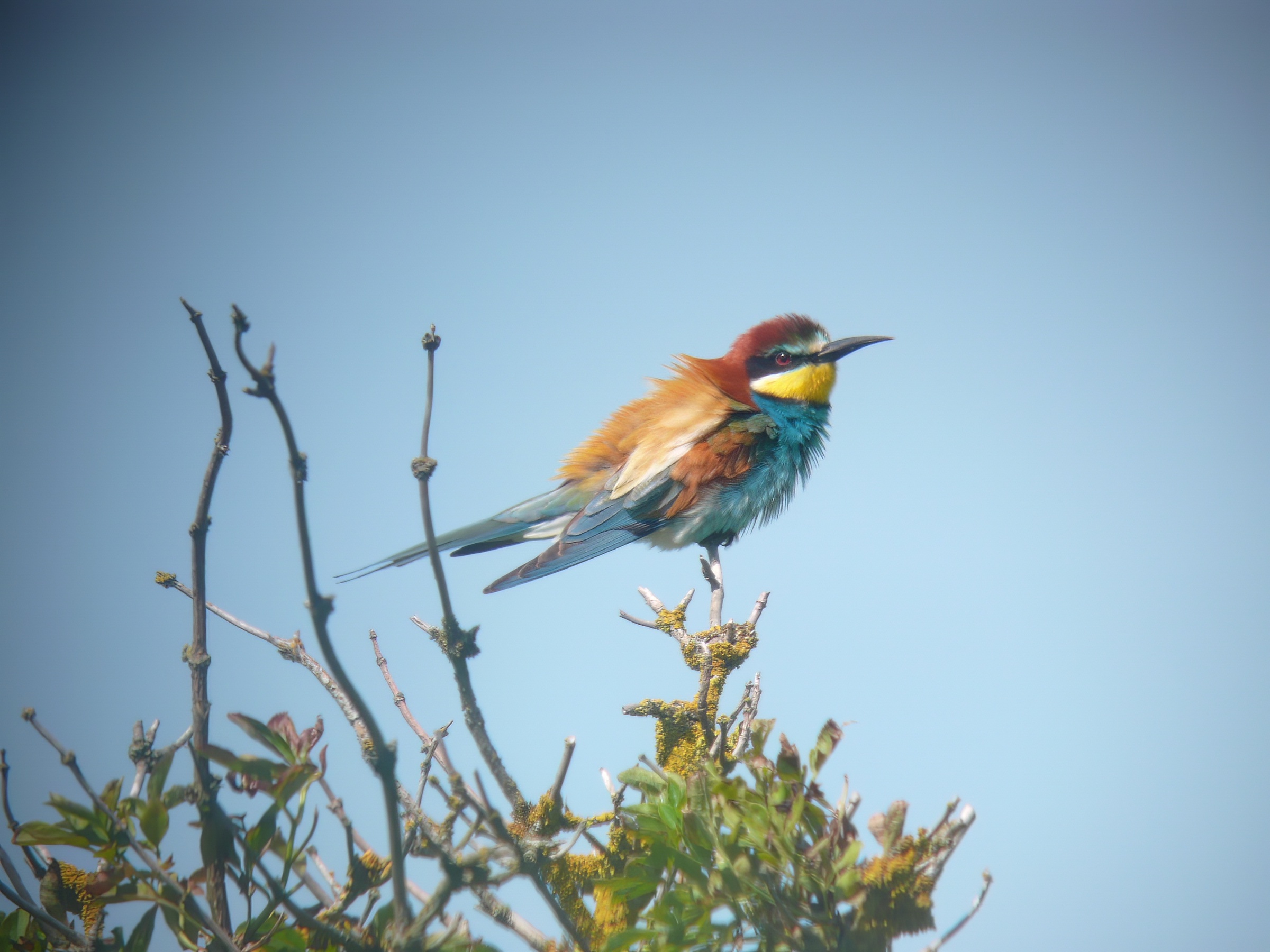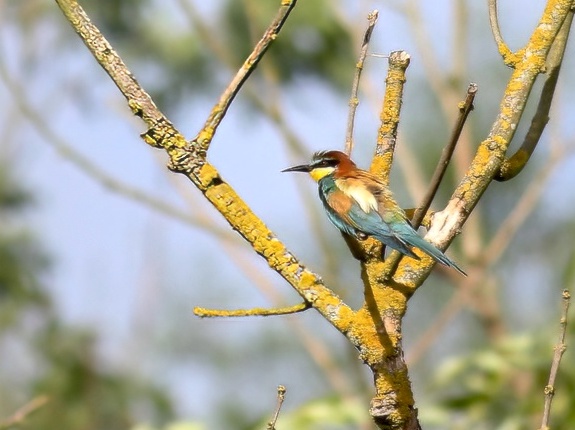European Bee-eater Merops apiaster


Predictably the early records of this species were of birds shot in July 1879 and August 1880. There is then a large gap in the historical archive with no further records until one at Gibraltar Point in September 1957. Since then there have been another 39 records involving around 89 birds; given the nomadic nature of individual birds, some replication may be involved. Although there were 26 records of single birds there were also flocks of five in 2002, six in 2005, 10 in 2015 and 13 in 2023. There was a breeding attempt in nearby Nottinghamshire in 2017 but there have been no signs of breeding in Lincolnshire.
European Bee-eater was devolved from BBRC in 1991, a reflection of the large number of records involved with some 369 individuals logged between 1950-1990. The species has since been reported in the Reports on scarce migrant birds in Britain series, published in British Birds and in the most recent one, White and Kehoe (2019) the annual mean numbers occurring in Britain has been shown to have risen over successive time periods from 20 in 1980-1989 to 75 in 2010-2017.
Finder’s report: Bee-eaters at Gibraltar Point NNR on September 2nd, 1958, fourth county record.
by A. D. Townsend.
Note: account from the original BBRC submission, this is the fourth county record and the first that we have on file. There were other British autumn records in 1958 in Kent (July 11th), Surrey (August 5th), Leicestershire (September 13th) and Sussex (September 19th).
Circumstances
Three birds flew northwards in thick mist, they were seen for only a very short periods as they dipped low over us. They were identified before they were seen by the call, a soft ‘prrrt’, by Don Parr of Chessington, who knows the species very well. The birds were thrush-sized with long tails, the gorget was seen by one of them. Light-coloured (yellow), black-edged bibs and protruding tails and the general impression of graceful Swallow-like flight.
Reference
Pyman, G. A. on behalf of the Rarity Records Committee (1959). Report on rare birds in Great Britain and Ireland in 1958. British Birds 53 (4): 15-173.
(Account as per new Birds of Lincolnshire (2021), included October 2022)

